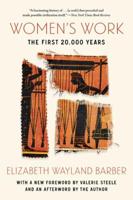Publisher's Synopsis
A startling exploration of slavery in the Islamic world from the 7th century to the present
Slavery in the Islamic world has a long, diverse and controversial history. Captives and Companions is a brilliant synthesis of history and contemporary reportage that brings to life the voices of the enslaved in stories of eighth-century concubines and ninth-century revolts, thirteenth-century slave soldiers who established dynastic rule over Egypt, Syria, and Iraq, eighteenth-century corsairs and twentieth-century pearl divers in the Gulf. It also has first-hand accounts of this legacy in the twenty-first century, including the depredations of Daesh and continuing hereditary slavery in Mali and Mauritania.
Justin Marozzi traces the extraordinary variety of enslavement in the Islamic world, which ranged from agricultural labour and domestic toil to elite concubinage, guardianship of sacred spaces, political leadership and even military command. He shows how Africa bore the brunt of the demand for slave labour, fuelled throughout the nineteenth century by expanding global markets and commodity chains. Slavers plied African coasts, traders raided inland for human cargo, and millions were marched across the Sahara into captivity. Meanwhile, North African corsairs turned the Mediterranean into a slave-raiding 'free-for-all' between Muslims, Christians and Jews.
Taking the reader on an extraordinary historical journey from Baghdad to Bamako, Tripoli to Timbuktu, Istanbul to the Black Sea, this is the riveting human drama of those caught up in one of history's most remarkable overlooked stories.










